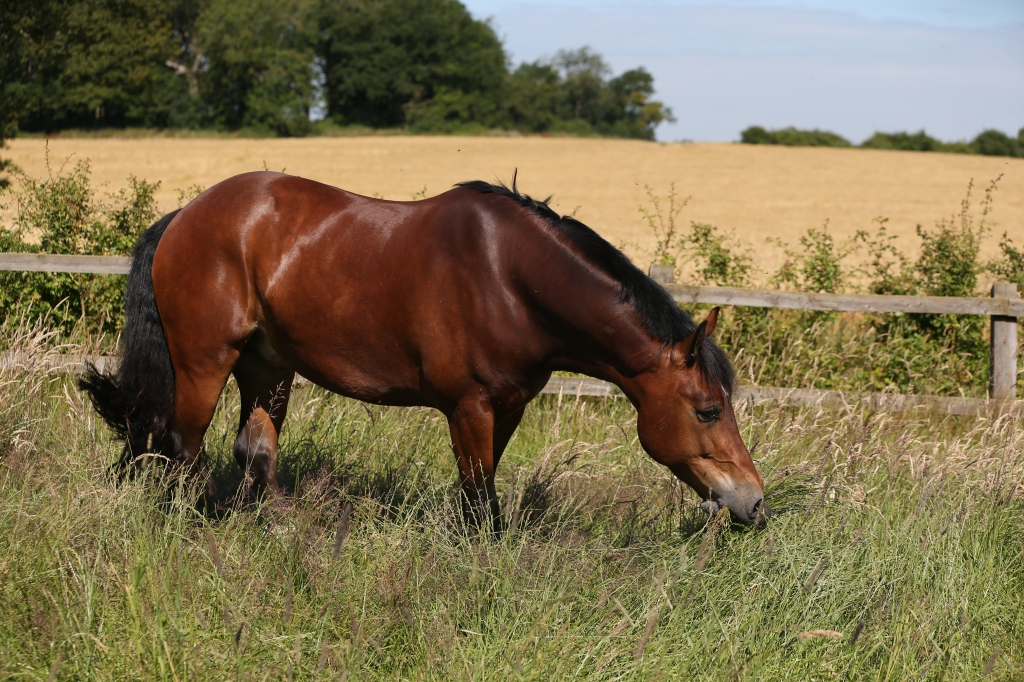
New Study Confirms Insulin Dysregulation Status Cannot Be Predicted From Physical Observation Alone
Insulin dysregulation (ID) status in ponies cannot be determined solely by observation of body condition, was the conclusion a new study, published online last month in association with the SPILLERS™ brand.1 The results highlight that ID, and the associated increased risk of laminitis, may occur in ponies across a wide range of body conditions, ages and levels of exercise, not just in those that are overweight. The study also showed that ID was less common in ponies that undertook more exercise including low-intensity exercise.
“This work confirms that while body condition is a useful indicator, we can’t simply assume that ponies with obvious physically apparent attributes such as excess weight are the only group likely to have ID,” said Sarah Nelson, Product Manager at Mars Horsecare, home of the SPILLERS brand. “We must consider multiple variables when targeting ponies for ID screening, in order not to miss those potentially at increased risk of laminitis, who may have a ‘healthy’ body condition score. The association with even low-level exercise is also an important practical management message for horse owners.”.
Insulin is a hormone produced by the pancreas. The release of insulin is the signal for cells, largely in muscle and liver tissue to absorb glucose (sugar) from the blood. Insulin dysregulation (ID) is a term that includes a high basal or ‘resting’ insulin (in the blood), an exaggerated insulin response to consuming starch and/ or sugar and tissue insulin resistance (a failure of cells to respond to insulin). The concentration of insulin was measured in the blood of ponies in this study before and sixty minutes after they were given, orally, a sugar syrup (an oral sugar test (OST)). An association between ID and laminitis is well-established and early detection of ID is likely to be useful in helping to prevent the disease.
The study carried out by Edd Knowles and colleagues at the Royal Veterinary College, London entitled Factors associated with insulin responses to oral sugars in a mixed-breed cohort of ponies was conducted in collaboration with the makers of SPILLERS, via the WALTHAM™ Equine Studies Group.
A total of 1763 OSTs were taken from 367 non-laminitic ponies over four years. The ponies were visited and tested in the Spring and Autumn unless they developed laminitis. Various physical parameters were recorded at the time of each OST including weight, height, body length, neck length, heart girth, belly girth, body condition score and cresty neck score. Owners/carers were asked to complete a questionnaire concerning the specific characteristics, diet, management, duration and intensity of exercise and health for each pony at each visit. Serum insulin concentration at 60 min (InsulinT60) during an OST, in the first paper from this work2 has been shown to be an indicator of future laminitis risk.
The study concluded that associations between InsulinT60 and physical and owner-reported variables were limited; Season, owner-reported and physical features only explained 10%– 27% of the differences in InsulinT60 risk status in the study population.
The findings support previous work that suggested body condition scoring alone was not sufficient to determine insulin dysregulation (ID) status and emphasises the value of using an oral sugar test to screen for ID status.3
The lead author Edd Knowles stated in the paper: “Our work has shown that while physical and owner-reported features can be used to identify ponies with a higher risk of ID, veterinarians should not limit testing for ID to ponies in which these risk factors are present. Doing so would miss identifying ponies at moderate to high risk of laminitis.”
The study also indicates that relatively small increments in equine exercise routines may be beneficial. 18% of samples from ponies that were reported to do no trotting exercise were in the high-risk InsulinT60 category compared with only 9% of samples from those reported to undertake 1–2 h of trotting per week. This finding supports earlier research, conducted in collaboration with the SPILLERS brand, via the WALTHAM™ Equine Studies Group, on the benefits of low intensity exercise.4
“We are proud to be involved with this important work which brings considerable practical information to horse owners,” said Sarah Nelson. “As our understanding of the diagnosis and management of insulin dysregulation develops, we will become better equipped at helping to prevent laminitis, with the ultimate goal of eradicating this debilitating disease altogether.”
To find out more about the SPILLERS range contact the Care-Line on + 44 (0)1908 226626 or visit www.spillers-feeds.com.
ENDS
References
1.Knowles EJ, Harris PA, Elliott J, Chang Y-M, Menzies-Gow NJ. Factors associated with insulin responses to oral sugars in a mixed-breed cohort of ponies. Equine Vet J. 2023. https://doi.org/10.1111/evj.13983
2. Knowles, E.J., Elliott, J., Harris, P.A. Chang, Y.M. and Menzies-Gow, N.J. Predictors of laminitis development in a cohort of non-laminitic ponies. Equine Vet. J. 2023: 55 (1) 12-23
3. N.R. Liburt, S.L. Mastellar, E.R. Share, P.A. Harris. How challenging is it to find non-insulin dysregulated horses in an apparently clinically healthy herd of university horses? Journal of Equine Veterinary Science. 2023; 124. https://doi.org/10.1016/j.jevs.2023.104389.
4. Bamford, N ; Potter, S ; Baskerville, C ; Harris, P ; Bailey, S Influence of dietary restriction and low-intensity exercise on weight loss and insulin sensitivity in obese equids J Vet Intern Med. 2019. 33:280- 286
More from Spillers
- Feed brand invites horse owners to ‘Play Your Calories Right’ and win £250
- Feed manufacturer’s survey uncovers equine weight management obstacles
- Feed brand to donate to Redwings for every new Club member
- Win fame and free feed with leading equine nutrition brand
- Mars Horsecare appoints new Global Science & Nutrition Director

 2 years ago
2 years ago  1626 views
1626 views

 3 days ago
3 days ago